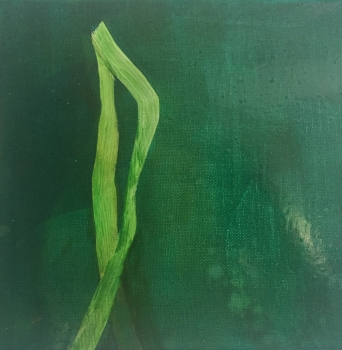Historical Remnants
A Group exhibition with:
Jo Darbyshire
Kevin Robertson
Olga Cironis
Tony Windberg
Toni Wilkinson
Sine Macpherson
Mark Tweedie
Opening Saturday 1 August, 2020, 2–4pm
Exhibition continues until 22 August 2020
At
Art Collective WA
2/565 Hay Street
Cathedral Square, Perth
art@artcollectivewa.com.au
artcollectivewa.com.au
Open: Wednesday to Friday 11am–4pm, Saturday 12–4pm
Or by appointment call +618 9325 7237
In Australia no permit is required to scatter ashes at sea. A captain of a ship can take your loved one’s ashes along on a voyage and as the ashes are scattered, the mariner’s farewell verse is read as the ship’s bell tolls eight times.
Or you can take your own boat out, free the ashes into the wind and toss flowers into the water, as a final farewell.
Hugal’s passage is the passage of sea between Garden and Carnac Islands, also called Challenger Passage. This was where my father often sailed and we scattered his ashes there, on the 23 February 2019. (Lat 32°4'59.98" Lon 115°38'6.01")
The Roman Catholic Church believes it is not proper to scatter or pour cremated remains over the sea, water, or on the land. "The church separates itself from attitudes and rites that see in death the definitive obliteration of the person, a stage in the process of reincarnation or the fusion of one's soul with the universe" Cardinal Muller, Catholic News service, 25 Oct 2016
Many people believe in exactly those three attitudes; Rock Hudson, Neil Armstrong, Robin Williams, Janis Joplin all requested their ashes be scattered at sea.
There are other reasons for such a watery memorial too; The ashes of Titanic's fourth officer, Joseph Boxhall, were scattered at sea following his death, aged 83, in 1967, at 41°46N 50°14W, the position he had calculated for the ship on the night of the sinking. And Osama bin Laden’s ashes were also scattered at sea because as one U.S. official stated: "finding a country willing to accept the remains of the world's most wanted terrorist would have been difficult". It was also done to prevent his burial place from becoming a ‘terrorist shrine’.
_2020__normal.jpg)

_2020__normal.jpg)
_2020__normal.jpg)
_jo_darbyshire_2020__normal.jpg)
